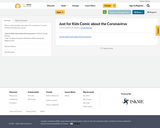
This is a child friendly comic about the coronavirus. It can be printed and folded into a book.
- Subject:
- Health & Fitness
- Health Education
- Material Type:
- Reading
- Date Added:
- 03/25/2020

This is a child friendly comic about the coronavirus. It can be printed and folded into a book.
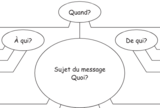
Sujet
Planification d'écriture
Description
L’élève fera la rédaction d’un message du jour pour un membre de sa famille en suivant les étapes du processus d’écriture, selon son rythme d’apprentissage.
**avec documents à télécharger

In this resource students will learn about the Kwakwaka’wakw (pronounced: kwock-KWOCKY-wowk) people of British Columbia, Canada. The focus is on Kwakwaka’wakw traditions that express concepts of wealth, values of giving, and the importance of cultural continuity. Students will learn about the Kwakwaka’wakw potlatch practice: its history, the values inherent in it, and the important role it plays in establishing and maintaining family connections to the past, to ancestors, and to the spirits of all living things. Students will use Kwakwaka’wakw concepts and discuss differences in value systems.

In this transcript of an interview for Eyes on the Prize, psychologist Kenneth Clark describes his research that illustrated the impact of racism on African American children.
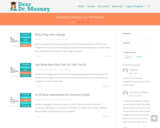
Explore this "Dear Dr. Mooney" series. Find articles on:
- Phonology - What’s That Sound I Hear?
- Morphology - Teach Your Students to be Word Detectives
- Syntax - It’s All About Understanding the Formula for English
- Semantics - Your Words Mean More Than You Think They Do
- Pragmatics - Doing Things with Language
Each article provides information, implementation strategies and links to related resources.

In this art history video discussion Dr. Beth Harris and Dr. Steven Zucker consider Fernand Khnopff's "I Lock the Door Upon Myself," 1891. Neue Pinakothek, Munich.
They disucss the Symbolist painters and a poem by Christina Rosetti.
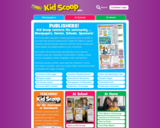
Kids Scoop is News magazine that features standards-aligned activity packs for kids K-5.
Kid Scoop News magazine is available as a free PDF or print newspaper delivered to classrooms. This magazine can be shared with students to read at home or in the classroom. After students have read through the magazine, teachers might have them share out to the class something they learned or had a question about. This could kick off a discussion and might even lead to further research into some of the more interesting topics.
Beyond the magazine, teachers will find dozens of downloadable activities and lesson plans -- some free, some paid -- to slot into lessons. Many of these would work well as ways to kick off or cool down a class period. The resources for home-school connections offer helpful tips for communicating with parents about ways kids can use and benefit from Kid Scoop News at home.
The "Kids" section includes the following topics: Answers, How to Draw, Just Plain Weird, Puzzles, Scrub Squad, Write On
The "Teachers" section includes: Next on Kid Scoop, WWC Topics, Teacher Guide, Teacher Scoop, Standards, STEM News
The "Parents" section includes: Crafts, Recipes, Try This At Home

«Kids Boost Immunity correspond aux compétences essentielles du programme d'études de la Saskatchewan énumérées ci-dessous. Vous pouvez également y trouver une description des leçons de base disponibles pour les étudiants de la Saskatchewan . Chaque niveau contient une sélection de leçons qui correspondent aux attentes du curriculum. Veuillez noter qu'il ne s'agit pas d'une liste exhaustive du programme. Les enseignants ont trouvé chez KBI beaucoup plus de liens pédagogiques avec le programme que ce qui est décrit ici!
La pensée critique et l’évaluation des informations:
Les leçons sur la pensée critique et l'évaluation des informations sur KBI sont alignées avec plusieurs matières du programme d'études de la Saskatchewan. Ces leçons fournissent des exemples sur la façon dont une mésinformation peut influencer l'opinion, souvent en créant un sentiment de peur. Une méthode d'évaluation de style liste de contrôle permet aux étudiants d'évaluer la fiabilité des sources d'information. D'autres stratégies d'évaluation incluent apprendre à reconnaître les préjugés personnels et l'utilisation d'une approche scientifique pour tester les idées. Pour les élèves au niveau intermédiaire-supérieur il y a des leçons sur la conception d'expériences de travail, la création d'hypothèses de travail, l'exploration des biais et la compréhension de la corrélation par rapport à la causalité. »
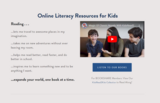
"KidsRead2Kids helps kids build self-esteem and reading confidence with every chapter. We hope to inspire and empower young readers.
KidsRead2Kids was founded by Dyslexic and ADHD siblings to bring the joy and confidence back to the struggling reader.
We provide free video-audio books read by kids for kids - filmed chapter by chapter for easy listening. A great resource for both homeschooling parents and primary teachers."
Select "Read Alouds" from the top menu to find Classic Novels like Anne of Green Gables, Early Learners (including picture books and decodable books), Popular Stories (like Kit Kittredge), and even Lesson Plans!

Find activities, games and stories for youth and educators about Indigenous peoples' culture, history and languages.

Looking for something fun and educational to do this summer?
Check out this great site. It has 4 weeks of activities for kids of all ages. You'll find screen-free activities, crafts, online games and videos, virtual tours of the coolest places to see the coolest things, Live Cams, science experiments, STEM activities, Minute to Win It family games, art lessons, summer camp ideas to do at home and much, much more!
Let the summer fun and learning begin!
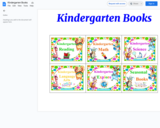
“Kindergarten Books by Subjects” for parents & kids for the summer! Copy the link into Google Classroom, Seesaw, ClassDojo, or any other platform and keep kids magically reading over the summer!
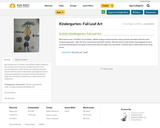
We read the story “Leaf Man” by Lois Ehlert. While reading, we discussed the various animals and objects that the artist created using leaves. After the story we brainstormed other animals. We then took it a step further and imagined we were someone/something else and again brainstormed what we might see in the leaves. Students then created works of art using leaves.

This course is a part of physics course structured and designed for class room teaching. The content development is targeted to the young minds having questions and doubts. The book conforms to the standards and frame work prescribed by various Boards of Education. This course contains a 669 page book available in html and pdf formats.

An interactive applet and associated web page that show the properties of a kite, (a quadrilateral with two distinct pairs of equal adjacent sides). The applet shows a kite and the user can reshape it by dragging any vertex. The other vertices move automatically to ensure it always remains a kite. The web page lists the properties of the kite. Applet can be enlarged to full screen size for use with a classroom projector. This resource is a component of the Math Open Reference Interactive Geometry textbook project at http://www.mathopenref.com.

On this website you will find a comprehensive collection of documents, oral histories, newspapers, paintings, and photos that relate to the events of the 1864 war and the aftermath. You are invited to become an historian, to study the evidence and come to your own conclusions about the causes, outcomes and how the war has been understood through time. You will find other mysteries here too, not the least of which is, who was Klatsassin? The name means: "nobody knows him".
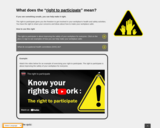
WorkSafe Saskatchewan is a great resource to access general information about Worker's Rights in Saskatchewan. There are several graphics and videos available to use with students explain each right.

The image is an example of a Koch Snowflake, a fractal that first appeared in a paper by Swede Niels Fabian Helge von Koch in 1904. It is made by the infinite iteration of the Koch curve.

Most American students' exposure to the Korean Peninsula begins and ends with the teaching of the Korean War and division along the 38th parallel. The sources and activities here aim to take students beyond the Korean War to explore the divergent stories of North and South Korea and to analyze the causes and effects of each country's unique development. The activities introduce learners to the long-lasting economic and political effects of Korea's division by examining South Korea's rapid industrialization, North Korea's continuing struggle to ensure adequate food for its population, and the arguments for and against reunification of the Korean Peninsula. Working with a photo of a South Korean labor strike, graphs depicting the devastating effects of food shortages in North Korea, and a song calling for reunification, students will gain a better understanding of the peninsula's varied history as well as a greater appreciation for the lived experiences of North and South Koreans at home and abroad.

In this transcript of an interview recorded for Eyes on the Prize, Stokely Carmichael describes SNCC organizing campaigns and his views on Black Power.